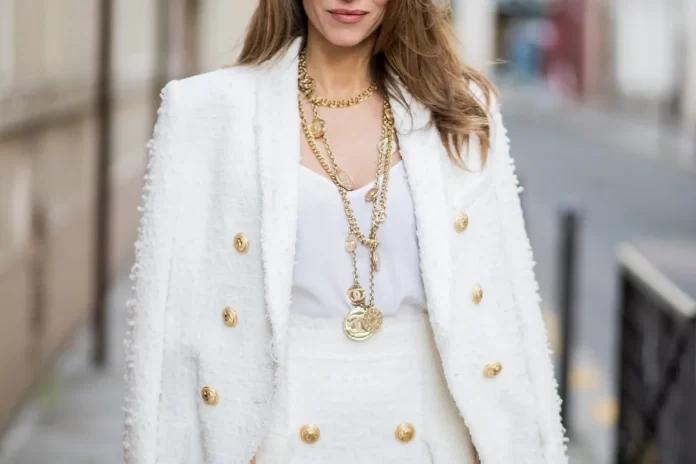Jewelry has been a part of human history for thousands of years, serving both functional and aesthetic purposes. From ancient civilizations to modern times, jewelry has been used to denote wealth, status, and cultural identity.
Throughout the ages, jewelry has been used to symbolize power and wealth, with the wealthy wearing elaborate and ornate pieces as a way to demonstrate their social status. During the Renaissance era, jewelry became more intricate, with the use of gems, pearls, and diamonds becoming popular. The Industrial Revolution brought about the mass production of jewelry, making it more accessible to the general public. In this article, we’ll take a visual journey through the ages, exploring the evolution of jewelry and its significance in various cultures.

Contents
Ancient Jewelry
Jewelry has been found in archaeological sites dating back to ancient civilizations such as Egypt, Mesopotamia, and the Indus Valley. These early pieces were often made from natural materials such as shells, bones, and stones. As civilizations progressed, jewelry became more elaborate and intricate, with precious metals such as gold and silver being used to create exquisite pieces.
One of the most famous examples of ancient Jewellery is the burial mask of King Tutankhamun, which features a striking array of gold and precious stones. Jewelry was often worn by ancient Egyptian royalty and nobility as a symbol of their status and wealth.
Medieval Jewelry
During the Middle Ages, jewelry continued to be an important symbol of wealth and status, with precious stones and metals being used to create ornate pieces. Royalty and nobility would often commission jewelry as a way of displaying their power and influence.
In medieval Europe, the use of jewelry was also tied to religious symbolism, with crosses and other religious symbols being incorporated into pieces. During this time, jewelry also began to be worn more widely by the middle classes, with simpler designs and materials being used to create affordable pieces.
Renaissance Jewelry
The Renaissance was a time of great artistic and cultural development, and jewelry was no exception. During this period, jewelry became more elaborate and intricate, with a focus on intricate designs and natural motifs such as flowers and animals.
One of the most famous examples of Renaissance jewelry is the Medici necklace, which features an intricate gold design with precious stones. Jewelry during this time was often commissioned by wealthy patrons as a way of displaying their wealth and taste.
Modern Jewelry
In modern times, jewelry has continued to evolve and change, with new materials and technologies being used to create innovative pieces. From the Art Nouveau movement of the late 19th century to the modern minimalist designs of today, jewelry has always reflected the cultural and artistic trends of the time.
One of the most important developments in modern jewelry has been the use of new materials such as plastic, silicone, and resin. These materials have allowed designers to create bold and innovative pieces that were previously impossible to make.
Jewelry Today
Today, jewelry continues to be an important part of our cultural identity, with many people using it to express their individual style and taste. From simple and understated pieces to bold and statement-making designs, jewelry is a reflection of our personality and identity.
Whether you’re a fan of vintage and antique pieces or prefer modern and contemporary designs, there is no denying the enduring appeal of jewelry. As we continue to evolve and change as a society, jewelry will continue to evolve with us, reflecting our changing tastes, values, and cultural identity.




Italian goldsmiths 10 years specializes in Locket Pendants and memorial jewelry. ArsAura · Colleras, gemelos-Cufflinks-Gemelli artigianali.